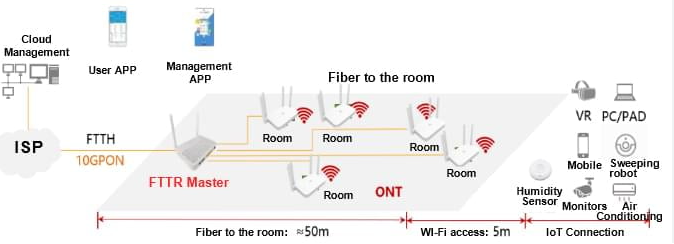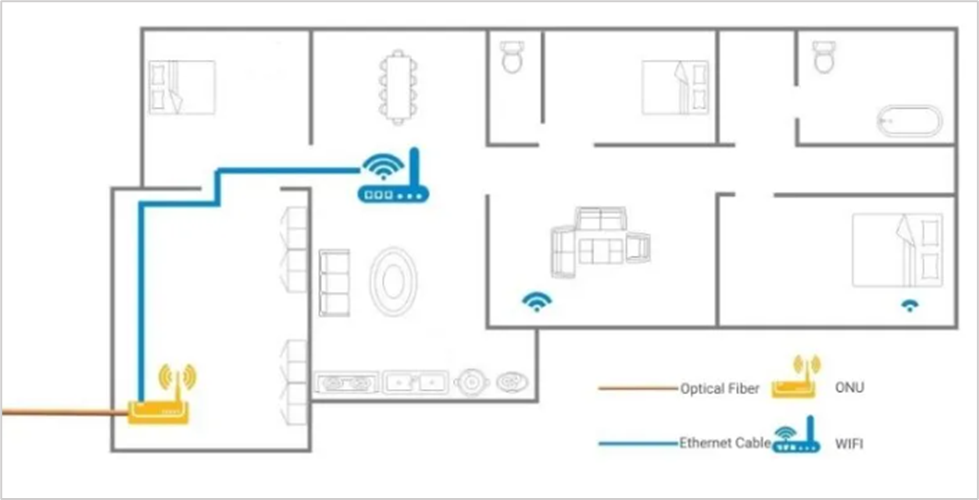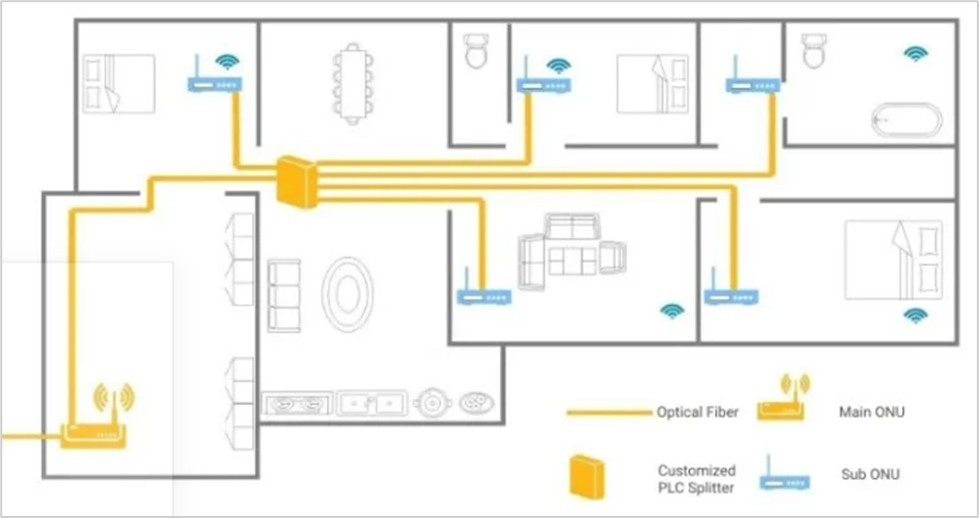FTTH Vs FTTR
What Distinguishes FTTH From FTTR?
Introduction:
The communication sector has been steadily increasing optical bandwidth upgrades in recent years. Our lives are now more convenient thanks to the ongoing advancements in network infrastructure and optical access. Simultaneously, there is a rise in creative commercial applications, such online education, cloud VR, cloud gaming, and ultra-high definition video, all of which have rising demands on network latency, jitter, and bandwidth.As a result, FTTR has developed based on both fiber-to-home and fiber-to-building.
The idea behind FTTR and FTTH:
Fiber To The Home, or FTTH, is an optical fiber communication transmission technique. In particular, fiber-to-the-home (FTTH) refers to the installation of optical network units (ONU) at residential or business locations.
FTTR, or Fiber To The Room, is a novel form of optical fiber-based in-premises networking technology.
WHAT MAKES THE FTTR AND FTTH DIFFERENT?
Currently, the operator's fiber to the home—which does not include the indoor network—completes fiber to the home. Users must set up their indoor network utilizing MOCA, PLC, wireless routers, and other technologies based on their requirements. With the use of FTTR technology, an optical fiber network including every room in the house can be formed in addition to an optical fiber into the home. The application and requirements of FTTR are described in detail in ITU-T GSTP-FTTR document, among which the indoor high-quality WiFi networking requirements are ranked first.
Numerous goods now use WiFi technology, such as laptops, smartphones, tablets, TVs, and smart speakers. People increasingly rely on WIFI connections to fulfill their network connection needs, making WIFI a crucial component of residential networks. Following optical access in the FTTH previously discussed, we can offer network access for various types of WiFi terminals by either integrating WIFI function into ONU with WIFI function or connecting to home routers that we have purchased through the Ethernet port of ONU (insert single-port ONU link).
WIFI technology has been evolving and improving since the initial IEEE 802.11a version was published in 1997, and the transmission rate has been rising. Up to 9.6 Gbit/s is currently supported with WIFI6 technology. Additionally being researched is the higher-rate WIFI7 (802.11be) standard.
WiFi version | WiFi standards | Release time | Maximum rate | Operating frequency band |
WiFi 6 | IEEE 802.11ax | 2019 | 11Gbps | 2.4GHz 或 5GHz |
WiFi 5 | IEEE 802.11ac | 2014 | 1Gbps | 5GHz |
WiFi 4 | IEEE 802.11n | 2009 | 600Mbps | 2.4GhHz 或 5GHz |
WiFi 3 | IEEE 802.11g | 2003 | 54Mbps | 2.4GHz |
WiFi 2 | IEEE 802.11b | 1999 | 11Mbps | 2.4GHz |
WiFi 1 | IEEE 802.11a | 1999 | 54Mbps | 5GHz |
WiFi 0 | IEEE 802.11 | 1997 | 2Mbps | 2.4GHz |
WiFi VERSION DEVELOPMENT AND STANDARDS
A single router cannot effectively cover an entire house with wireless WIFI signals due to the variety of housing styles and the attenuation of wireless signals by walls and space. For this reason, the WIFI Alliance has proposed an EasyMesh solution.
This approach creates a local area network (LAN) out of several Wi-Fi access points (AP).
Large-sized homes can benefit from indoor wireless networking by connecting many wireless routers that enable the EasyMesh feature. Nevertheless, the quality of a direct wireless connection between routers and gateways cannot be guaranteed by the router installation location due to the dispersed nature of mesh routers and the significant attenuation of 5GHz signals.
In the future, when you take advantage of home network services like video calls, video conferences, 8k high-definition video, augmented reality, virtual reality, or holograms, you want to be able to move around freely without worrying about service outages or other disruptions like lost connections. Consequently, in contrast to wireless or UTP, a fiber-based backhaul link with sufficient capacity is required to establish such a mesh network with high connection data rate & dependable roaming—FTTR.
|
| Ethernet(UTP) | Wireless |
Transmission Stability | High | High | Low |
Bandwidth | High (speed upgrade independent to ODN) | High (speed upgrade dependent to UTP cable) | Medium |
Range | Sufficient for home (To be defined) | <100m | Uncertain (Depends on channel) |
Manageable | Could be managed (To be defined) | No | No |
The FTTR (Fibre to The Room) all-optical Wi-Fi network solution enables customers to have high-speed Internet access at any time, in contrast to traditional network technology and FTTH. It is the only new technology in the business that can achieve coverage of the entire house (not just one or two rooms) above Gigabit, and it can immediately extend the optical fiber to every room.

Figure1: Defining FTTH & FTTR Network

Figure2: defining FTTH

Figure3: defining FTTR
CONCLUSION
Service assistance is provided via the network. Excellent service also makes the most of the network. Network and service are complementary. An further FTTH-based home network extension is called FTTR. Although FTTR has been tested, widespread adoption is still quite some distance off. It can only advance gradually until VR/AR, cloud gaming, high-definition video, and other services become more widely used.


Comments
Post a Comment